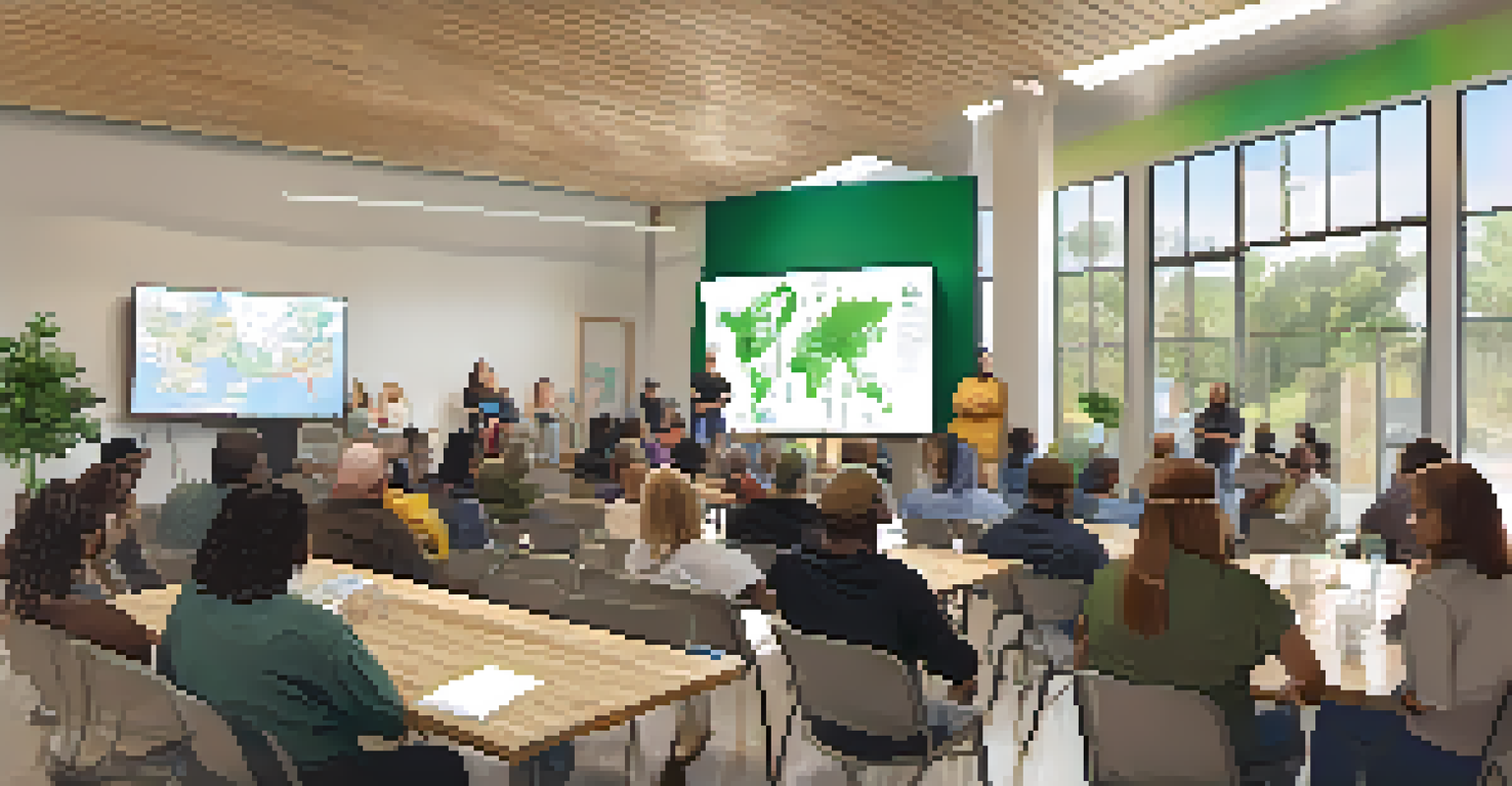Urban Planning Strategies for Integrating Dispensaries

Understanding the Importance of Dispensary Integration
Integrating dispensaries into urban planning is essential for creating well-functioning communities. As more cities embrace cannabis legalization, it's crucial to ensure these businesses are located thoughtfully within the urban landscape. This not only promotes accessibility but also helps normalize dispensaries, making them a part of the community fabric.
Urban planning is not just about buildings and roads; it's about creating communities and enhancing the quality of life for residents.
By understanding the potential impact of dispensaries on traffic, foot traffic, and local economies, urban planners can make informed decisions. Proper integration can lead to increased local revenue, job creation, and improved public safety. Moreover, it fosters a sense of acceptance and reduces stigma associated with cannabis use.
Ultimately, including dispensaries in urban planning discussions is about creating equitable access for all residents. This involves considering community needs and preferences, ensuring that dispensaries serve the public good while contributing positively to the urban environment.
Zoning Regulations: Crafting Effective Policies
Zoning regulations play a pivotal role in determining where dispensaries can operate. By developing clear policies that define appropriate zones for dispensaries, urban planners can mitigate potential conflicts with residential areas. This can involve designating specific districts that balance commercial needs with community comfort.

Effective zoning policies can also address concerns such as proximity to schools, parks, and other sensitive locations. By establishing buffer zones, planners can create a safer environment that reassures residents while allowing dispensaries to thrive. This thoughtful approach fosters harmony between dispensaries and surrounding neighborhoods.
Integrating Dispensaries in Communities
Thoughtful integration of dispensaries into urban planning fosters accessibility and reduces stigma.
Moreover, revisiting and revising zoning regulations as community needs evolve is crucial. Urban planners should engage with local stakeholders to ensure that zoning laws remain relevant and inclusive. This collaborative effort helps build trust and ensures that the needs of all community members are considered.
Community Engagement: Listening to Local Voices
Community engagement is a cornerstone of successful urban planning strategies. Involving residents in discussions about dispensary integration helps to address concerns and gather valuable insights. Hosting town hall meetings or workshops creates a platform for open dialogue and fosters a sense of ownership among community members.
The best way to predict the future is to create it.
By actively listening to local voices, urban planners can identify specific needs and preferences that might not be immediately obvious. This process allows communities to express their hopes for dispensary locations, hours of operation, and design aesthetics. Such collaborative efforts lead to solutions that reflect the community's unique character and values.
Ultimately, when communities feel heard and valued, they are more likely to support the integration of dispensaries. This buy-in is crucial for reducing opposition and ensuring a smoother rollout of new cannabis businesses in the area.
Designing Dispensaries: Aesthetic Considerations
The design of dispensaries significantly impacts their acceptance in the community. Urban planners should advocate for aesthetically pleasing and inviting storefronts that blend seamlessly with their surroundings. This can help dispel negative perceptions and create a welcoming atmosphere for both customers and passersby.
Incorporating elements such as green spaces, art installations, and community-oriented designs can enhance the appeal of dispensaries. When these establishments contribute positively to their neighborhoods, they are more likely to be embraced by residents. This approach emphasizes that dispensaries can be more than just retail spaces; they can be community hubs.
Zoning Regulations for Dispensaries
Clear zoning policies help balance the operation of dispensaries with community comfort and safety.
Furthermore, thoughtful design extends to the interior experience as well. A well-designed storefront can provide a comfortable atmosphere for customers, making their visit enjoyable. This attention to detail can significantly influence public perception and acceptance of dispensaries.
Transportation and Accessibility: Ensuring Easy Access
Transportation and accessibility are critical considerations in urban planning for dispensaries. Ensuring that dispensaries are easily reachable via public transport, biking, and walking can enhance their accessibility for all residents. This inclusivity is particularly important for individuals who may not have access to personal vehicles.
Planners should consider the placement of dispensaries in areas with high foot traffic to encourage visits. Additionally, designing safe and accessible routes can make a significant difference in how the community interacts with these businesses. This approach fosters a sense of community engagement and encourages responsible cannabis use.
Moreover, incorporating wayfinding signage and clear directions can help guide residents to dispensaries without confusion. By prioritizing accessibility, urban planners can create an environment that welcomes everyone and normalizes the presence of dispensaries in the community.
Safety Measures: Enhancing Community Security
Ensuring community safety is paramount when integrating dispensaries into urban settings. Urban planners must collaborate with local law enforcement and community organizations to develop safety measures that protect both residents and dispensary patrons. This can include increased lighting, surveillance, and community policing initiatives.
By implementing these safety measures, planners can alleviate concerns about crime associated with dispensaries. Creating a secure environment benefits everyone and fosters a positive relationship between dispensaries and the community. When residents feel safe, they are more likely to embrace the presence of these businesses.
Community Engagement is Essential
Involving local residents in planning discussions ensures their needs and preferences are reflected in dispensary integration.
Furthermore, establishing clear protocols for emergency situations can enhance community trust. By communicating safety strategies and ensuring transparency, planners can build a foundation of confidence that reassures residents about the integration of dispensaries.
Monitoring and Evaluation: Adapting to Community Needs
Monitoring and evaluating the impact of dispensaries on the community is vital for effective urban planning. By collecting data on customer demographics, foot traffic, and public sentiment, planners can assess whether dispensaries are meeting community needs. This ongoing assessment allows for adjustments to policies and practices as necessary.
Engaging in regular evaluations can help identify potential issues before they escalate. For instance, if a dispensary is generating traffic problems, planners can explore solutions such as adjusting operating hours or implementing traffic management strategies. This proactive approach ensures that dispensaries enhance rather than hinder community life.

Moreover, creating feedback loops where community members can voice their experiences fosters a sense of collaboration. By valuing community input, urban planners can create a more responsive and adaptable framework for integrating dispensaries into urban settings.